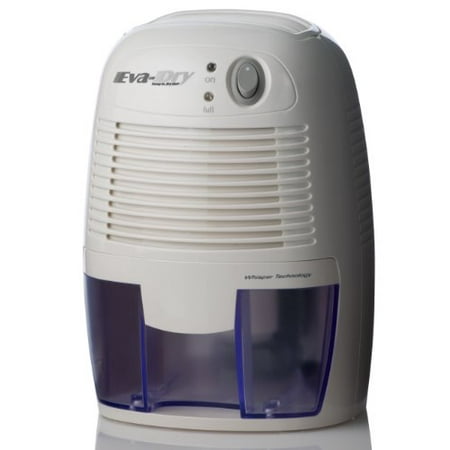- Good Sam Community
- Groups
- Travel Trailer Group
- Forum
- skylight condensation
- Subscribe to RSS Feed
- Mark Topic as New
- Mark Topic as Read
- Float this Topic for Current User
- Bookmark
- Subscribe
- Mute
- Printer Friendly Page
skylight condensation
- Mark as New
- Bookmark
- Subscribe
- Mute
- Subscribe to RSS Feed
- Permalink
- Report Inappropriate Content
Dec-08-2018 04:15 PM
Just noticed water droplets on membrane between ceiling and skylight bubble.
its colder here and running electric heat past several weeks.
Noticed it last week too and little plastic membrane that is sticky tapped to ceiling besel was unattached on one side. ( Possibly shower steam made sticky tape non sticky)
I pulled besel down and whole bubble was wet with large droplets. roof membrane folded over so drops were collecting in ceiling collar. No damage except small edge of luan damp.
Upon removal I see the back roof truss is open and I can see back wall of camper. Slight dew on nails and wall membrane on back wall.
I would think the heat from in the camper it getting through they membrane and interacting with the cold air in the bubble skylight and condensating..
Im thinking to insulate all gaps and openings around roof trusses with collar removed. Then put that membrane back but seal it to the collar with silicone.
Is that my best bet?
I could of course leave the membrane off too. as this is how I have it now so I can watch it a few days until I get some insulation.
Possibly spray foam may be better but I probably will just get a bag of the soft stuff.
So is my plan feasible? Anyone have this issue?
2006 Silverado ext cab long bed. 3:42 rear. LM7 5.3 motor. 300 hp 350 ft lbs torgue @ 4000 rpms
2018 coachmen Catalina sbx 261bh
- Mark as New
- Bookmark
- Subscribe
- Mute
- Subscribe to RSS Feed
- Permalink
- Report Inappropriate Content
Dec-09-2018 10:39 PM
lawrosa wrote:OK, that may be somewhat better. No delamination worries. Construction of stick and tin TTs varies.
Its a wood stick trailer and aluminum sided... FYI
The ones I have had were not very air tight at all. So condensation wasn't much of a problem.
OTOH, that made them not very comfortable in cold weather. Some stick and tin TTs may have some sort of vapor barrier in the walls in an attempt to improve on this. If so, then the same principle will be at work. Just instead of delamination, ,,,wet insulation will be the result. This will cause mold and wood rot.
BTW, at least some TTs have attic vents installed in the roof in an attempt to prevent some of this.... How well that works varies on just how it is designed, and the skill of the builder.
The bottom line is that with the small air volume of TTs, humidity can spike really fast. So we need to be aware of it, and take measures to minimize it's effects on our units.
100% boondocking
2021 Grand Design Momentum 398M
2 bathrooms, no waiting
104 gal grey, 104 black,158 fresh
FullBodyPaint, 3,8Kaxles, DiscBrakes
17.5LRH commercial tires
1860watts solar,800 AH Battleborn batterys
2020 Silverado HighCountry CC DA 4X4 DRW
- Mark as New
- Bookmark
- Subscribe
- Mute
- Subscribe to RSS Feed
- Permalink
- Report Inappropriate Content
Dec-09-2018 03:35 PM
2006 Silverado ext cab long bed. 3:42 rear. LM7 5.3 motor. 300 hp 350 ft lbs torgue @ 4000 rpms
2018 coachmen Catalina sbx 261bh
- Mark as New
- Bookmark
- Subscribe
- Mute
- Subscribe to RSS Feed
- Permalink
- Report Inappropriate Content
Dec-09-2018 01:05 PM
Now I want to explain in more detail just how humidity works in your TT.... and why it is bad.
When you heat air, it can hold more moisture in vapor form.
Moisture comes from normal TT activities such as cooking, showering, washing dishes, perspiring, and breathing.
When the warm, humid air contacts a cold surface such as your, sky light, a window, or the outer skin of your TT, it condenses into water. You will see this first when your windows start to fog.
This water won't hurt anything, but the same thing is happening inside your walls. The warm humid air passes right thru the inside wall layers until it contacts the outer layer. It will be slower, as the insulation slows, but does NOT stop the process. When it arrives at the outer skin of your TT, it is stopped as that layer is not water permeable. Then the condensation starts. If you have typical filon etc. outer skin, it is glued to a luan backer board. The condensation will occur between the luan and the filon, swelling the wood fibers of the luan and destroying the glue bond between the luan and the filon... This is delamination.
It is extremely difficult to fix and is usually more expensive that the TT is worth.
So run the dehumidifier! And monitor your windows. At times, you may still have to open some windows and vents. Cooking and showering can load moisture into the air faster than the dehumidifier can remove it.
If you see window fogging, react!
100% boondocking
2021 Grand Design Momentum 398M
2 bathrooms, no waiting
104 gal grey, 104 black,158 fresh
FullBodyPaint, 3,8Kaxles, DiscBrakes
17.5LRH commercial tires
1860watts solar,800 AH Battleborn batterys
2020 Silverado HighCountry CC DA 4X4 DRW
- Mark as New
- Bookmark
- Subscribe
- Mute
- Subscribe to RSS Feed
- Permalink
- Report Inappropriate Content
Dec-09-2018 12:44 PM
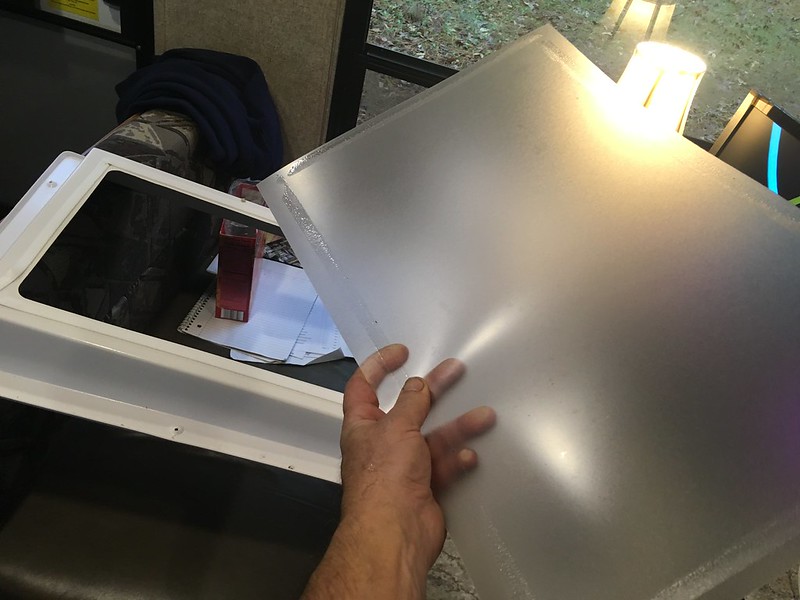
Removed old tape
add silicone bead under and around edge
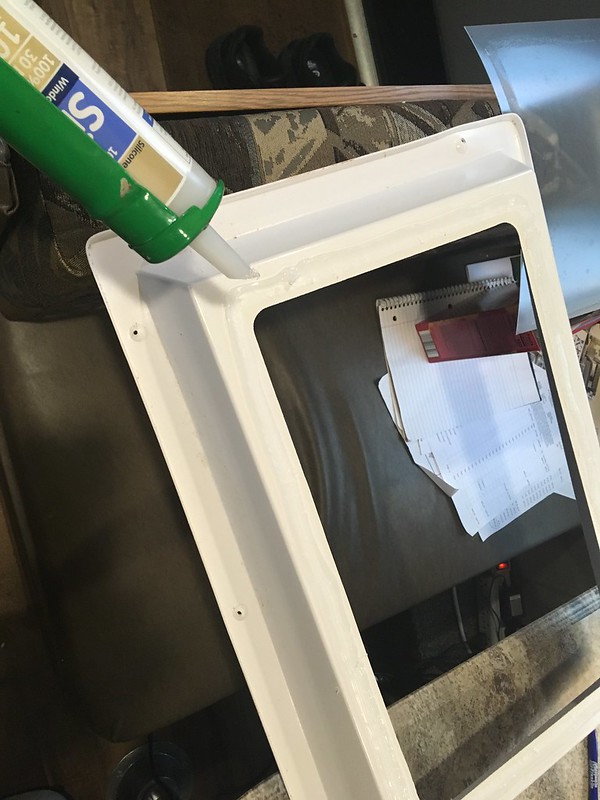
new humidifier
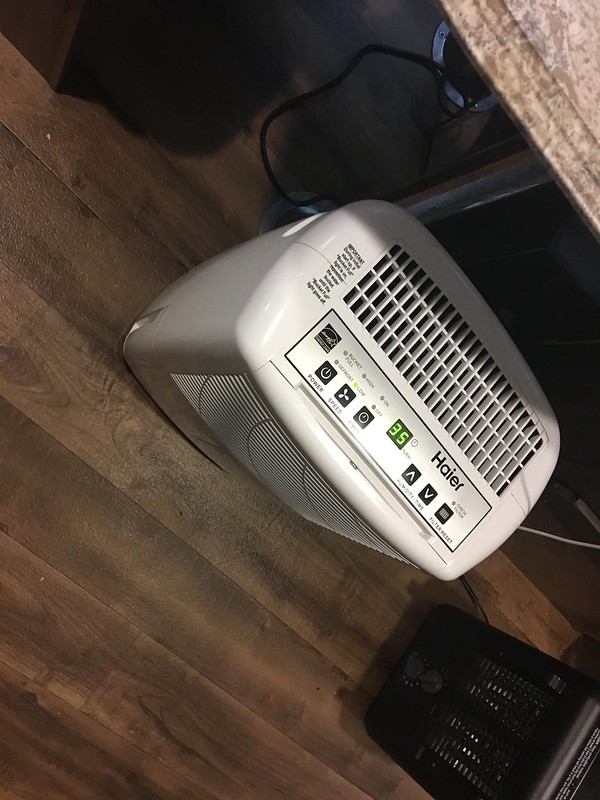
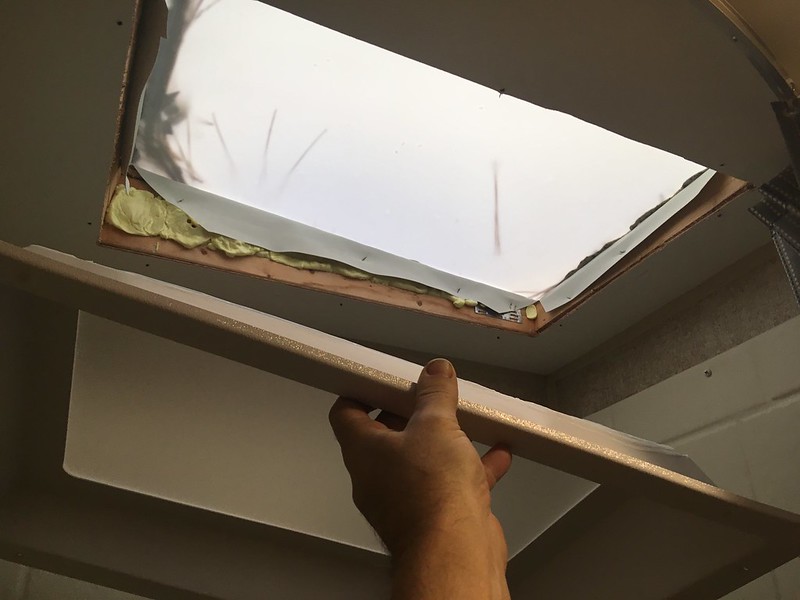
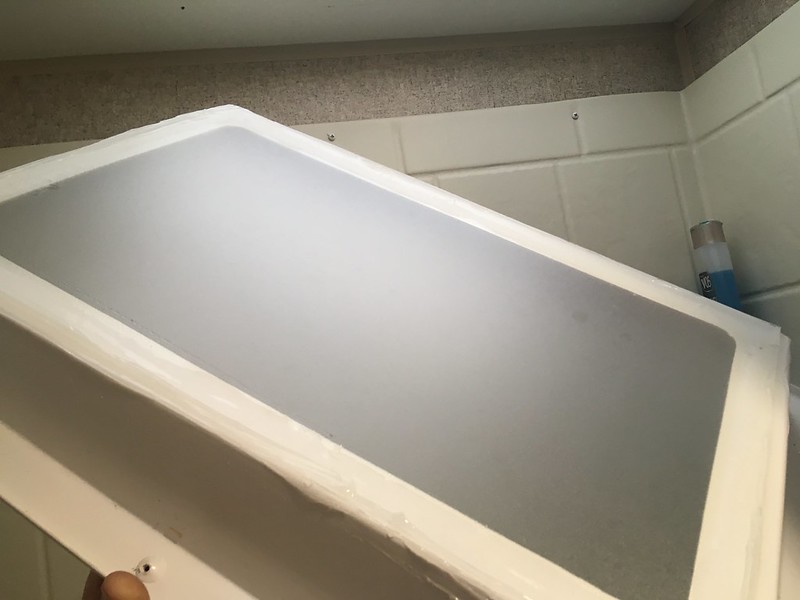
Hope it works.....
All completed..
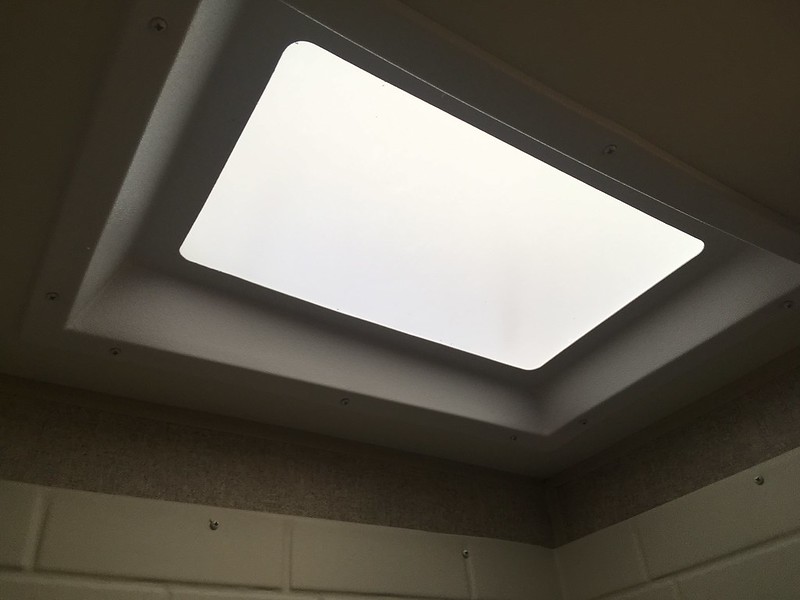
2006 Silverado ext cab long bed. 3:42 rear. LM7 5.3 motor. 300 hp 350 ft lbs torgue @ 4000 rpms
2018 coachmen Catalina sbx 261bh
- Mark as New
- Bookmark
- Subscribe
- Mute
- Subscribe to RSS Feed
- Permalink
- Report Inappropriate Content
Dec-09-2018 12:41 PM
No plastic film. About to insulate and put all back togther. Hope it works
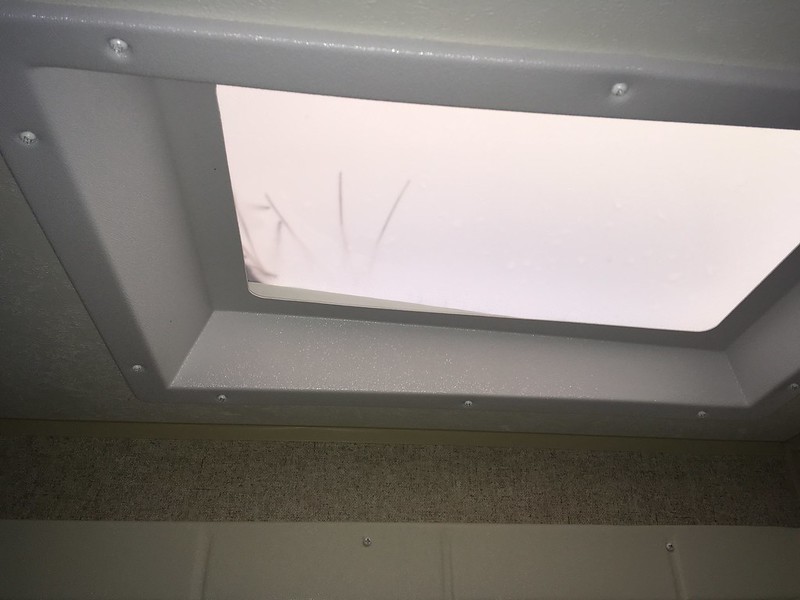
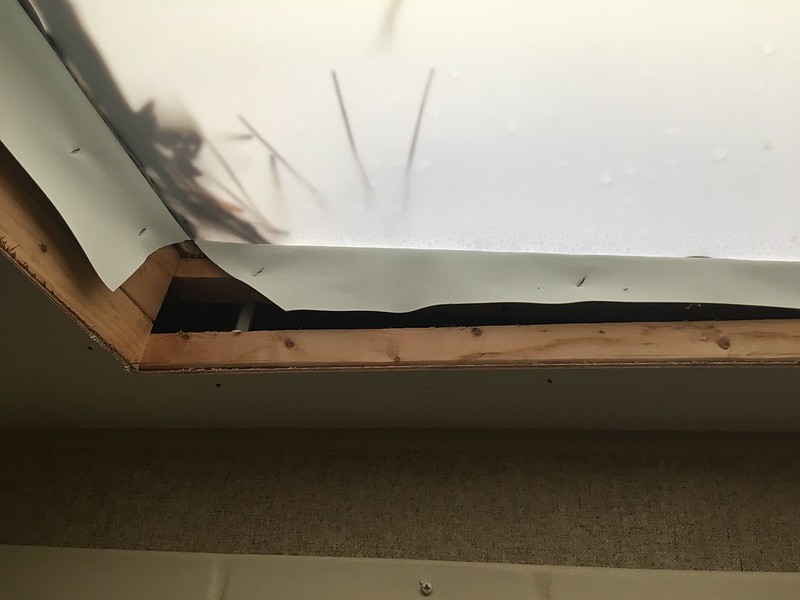
This side has insulation somewhat
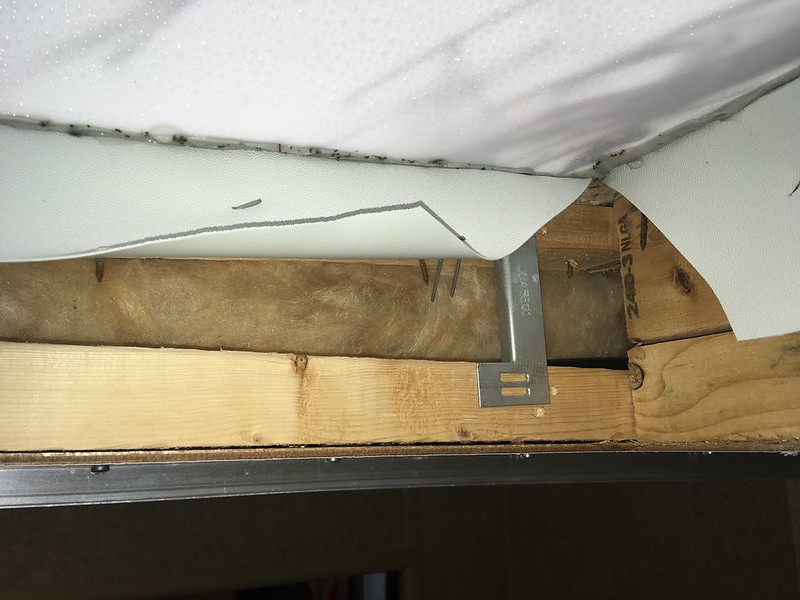
Stuffed insulation in there then foamed front.
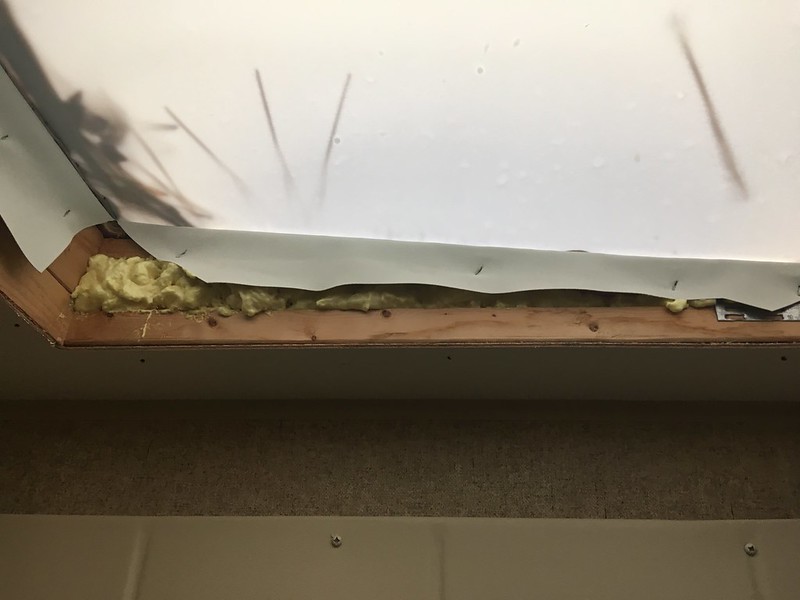
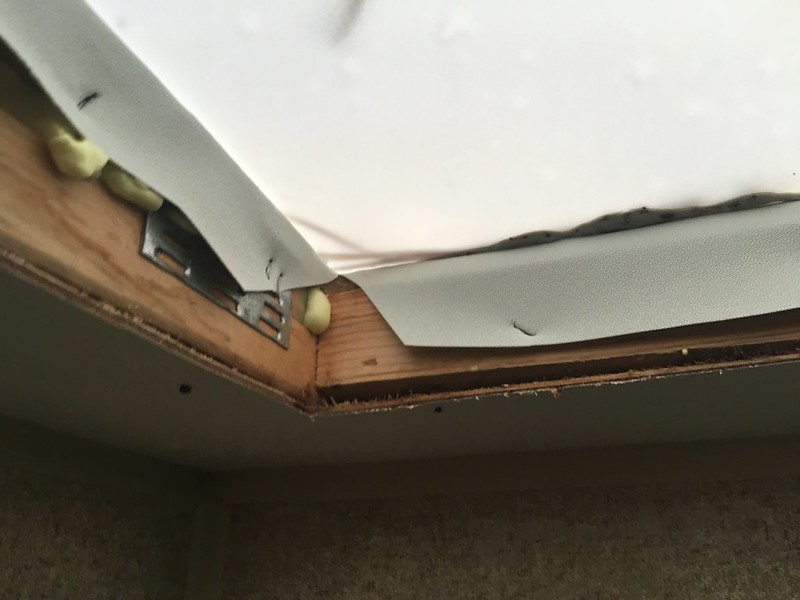

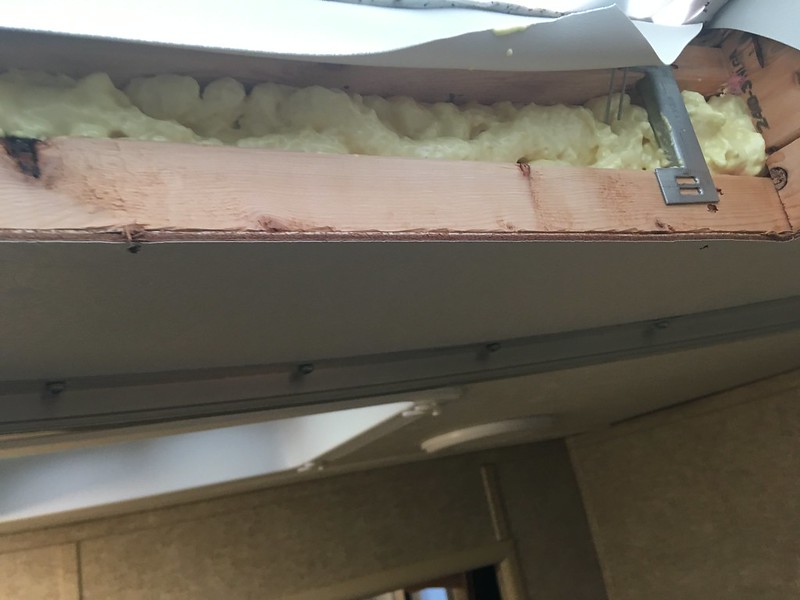
2006 Silverado ext cab long bed. 3:42 rear. LM7 5.3 motor. 300 hp 350 ft lbs torgue @ 4000 rpms
2018 coachmen Catalina sbx 261bh
- Mark as New
- Bookmark
- Subscribe
- Mute
- Subscribe to RSS Feed
- Permalink
- Report Inappropriate Content
Dec-09-2018 11:30 AM
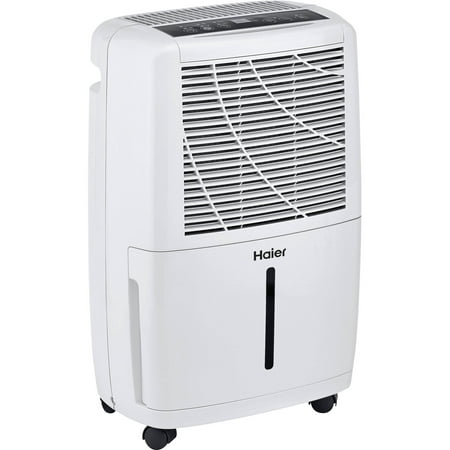
2006 Silverado ext cab long bed. 3:42 rear. LM7 5.3 motor. 300 hp 350 ft lbs torgue @ 4000 rpms
2018 coachmen Catalina sbx 261bh
- Mark as New
- Bookmark
- Subscribe
- Mute
- Subscribe to RSS Feed
- Permalink
- Report Inappropriate Content
Dec-09-2018 09:18 AM
In my new 5er, I did some creative re-plumbing and the shower is now HOT! But that produces a lot of steam. And steam is "humidity." And "humidity" condenses on everything, which isn't good.
So I found out, if we shut the bathroom door and turn on the ceiling fan and open a near by window in another room, the air pulls under the door of the bathroom and all the humidity with it. There's never any steam or fogged mirror any more doing this, even in this winter weather. (We used our camper last over Thanksgiving week). But it was pretty cold and the bathroom fogged up pretty easy.
After the shower is over, turn the fan off and shut the extra window. This simple step will help keep humidity down in the bathroom and keep it from spreading outside the bathroom. With the bathroom fan blowing to the outside, any air leaks in the "attic" of your camper that may be around your skylight, the air will be pulled inside, rather than shower humidity trying to escape outside.
This simple step should help your a lot cutting down shower humidity. An oh yes ... with that fan running when taking a shower, especially in the winter ... yep... it's a "burrrrrr" moment when you step outside the shower. But, I think you will warm up much faster than the dampness in your attic will dry out!
For the remainder of your camper, under normal winter use, where its warm inside and cold outside, condensation is going to happen. A dehumidifier is about the only, least costly and most effective solution.
- Mark as New
- Bookmark
- Subscribe
- Mute
- Subscribe to RSS Feed
- Permalink
- Report Inappropriate Content
Dec-09-2018 08:34 AM
You're on the right track I think. Insulation and remove any redundant "layers" that trap moisture is a good start.
2017 Heartland Torque T29 - Sold.
Couple of Arctic Fox TCs - Sold
- Mark as New
- Bookmark
- Subscribe
- Mute
- Subscribe to RSS Feed
- Permalink
- Report Inappropriate Content
Dec-09-2018 08:30 AM
If so that seems like it may be part of the problem, trapping condensation.
2017 Heartland Torque T29 - Sold.
Couple of Arctic Fox TCs - Sold
- Mark as New
- Bookmark
- Subscribe
- Mute
- Subscribe to RSS Feed
- Permalink
- Report Inappropriate Content
Dec-09-2018 08:12 AM
lawrosa wrote:mobeewan wrote:
If everything is sealed properly and you have no leaks then there should be no moisture between the skylight bubble and the interior skylight bezel.
I found water was dripping from my bezel flange and that there was moisture between the bezel and the bubble. When I removed the bezel I found the skylight wood framing had damp spots and water had been weeping under the ceiling panels. Upon further examination I wound up putting my thumb through a water damaged spot in the ceiling paneling. The ceiling insulation was wet and trusses had damp and water stained wood. The skylight bubble was cracking around the inside perimeter of the flange and water was leaking through the cracks, running down and wicking onto the top side of the ceiling paneling and spreading out wetting the insulation and rafters. The skylight bubbles eventually suffer the toll of UV damage just like the plastic vent fan hatches and need to be replaced eventually. If your skylight is not cracking and leaking through your caulking on and around the flange may need to be replaced.
Its a brand new camper. There is no damage to the skylight. And no caulking is leaking. The underside of bubble is condensating and running down to the edges..
Amazing that no one had/has this issue.. Maybe no one winter camps.
we camp often on the oregon coast in the winter. outside humidity near 100% day round. If we didn't run a compressor driven dehumidifier we would have your problem. w/o it windows are wet in the morning etc. With it we pull 2-5 gallons of water out of the trailer each day. On occasions even more if we are out and about and come back with wet or damp clothing.
AND when we shower or have the cooktop or oven on the vent fans are on HIGH along with a cracked open window. need to get the moisture from a shower or oven/stove OUT of the trailer! burning propane you get almost 1 gallon of water vapor for each gallon of propane burned. For the furnace and HWH, not an issue, the exhaust gets vented outside. for the stove/cooktop it can be an issue since the exhaust is vented inside. Can be even worse if you are in a humid environment and run a unvented propane heater inside the trailer.
2004 14' bikehauler with full living quarters
2015.5 Denali 4x4 CC/SB Duramax/Allison
2004.5 Silverado 4x4 CC/SB Duramax/Allison passed on to our Son!
- Mark as New
- Bookmark
- Subscribe
- Mute
- Subscribe to RSS Feed
- Permalink
- Report Inappropriate Content
Dec-09-2018 08:09 AM
lawrosa wrote:
ill try sealing it like I stated. I was thinking on one of these.But I am alone and using electric heater only.
pretty much useless. they will pull cups of water/day at best. you need something that will pull gallons/day, a compressor driven dehumidfier. even 1 person will perspire more than what the posted device will handle
2004 14' bikehauler with full living quarters
2015.5 Denali 4x4 CC/SB Duramax/Allison
2004.5 Silverado 4x4 CC/SB Duramax/Allison passed on to our Son!
- Mark as New
- Bookmark
- Subscribe
- Mute
- Subscribe to RSS Feed
- Permalink
- Report Inappropriate Content
Dec-09-2018 07:40 AM
I used one of those little dehumidifiers in the pass through when I had a cargo door leak. It worked in there, but would have had hardly any effect in the main cabin.
2015 Skyline Dart 214RB
2018 Silverado Double Cab 4x4
Andersen Hitch
- Mark as New
- Bookmark
- Subscribe
- Mute
- Subscribe to RSS Feed
- Permalink
- Report Inappropriate Content
Dec-09-2018 04:48 AM
lawrosa wrote:
ill try sealing it like I stated. I was thinking on one of these.But I am alone and using electric heater only.
I would think that you would need at least 10 of these units to do the job. Get a real dehumidifier.
- Mark as New
- Bookmark
- Subscribe
- Mute
- Subscribe to RSS Feed
- Permalink
- Report Inappropriate Content
Dec-09-2018 03:58 AM
